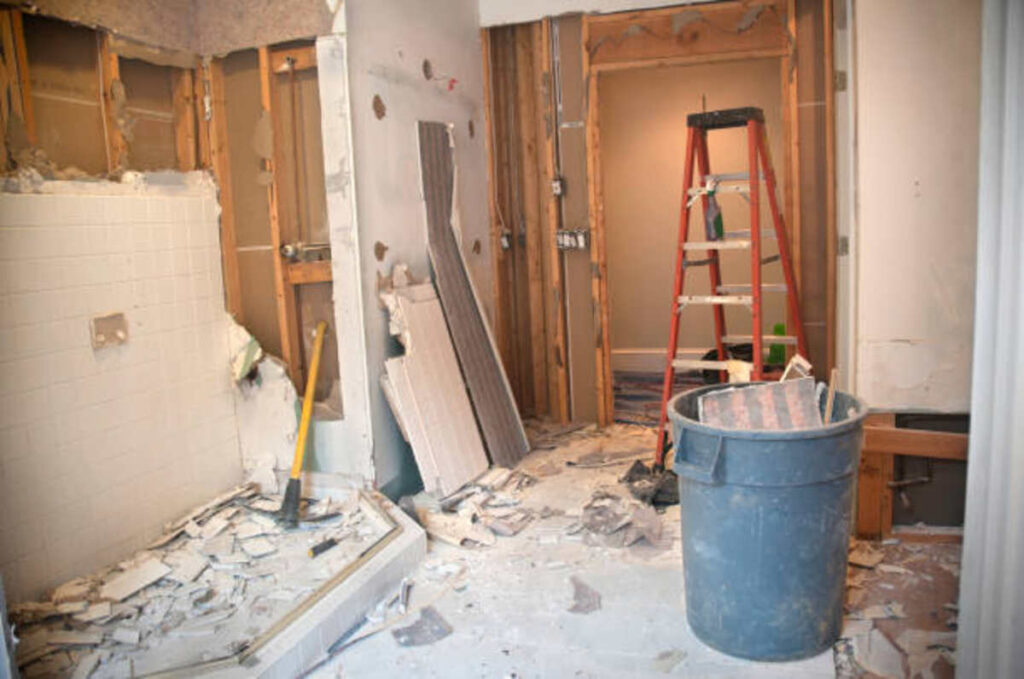Demolition projects in San Francisco can be as thrilling as a high-speed demolition derby, but they come with a lot more rules and a lot less chaos. If you’re gearing up for a demolition project in the city, it’s crucial to prioritize safety. Whether you’re a professional demolition company in San Francisco or someone with a DIY spirit, understanding and implementing safety practices is non-negotiable. Let’s dive into some essential safety tips to keep everyone safe and sound during your next demolition adventure. Choose the best demolition contractors san Francisco.
Understanding the Demolition Landscape
Before you even think about swinging that wrecking ball, it’s important to get a lay of the land. San Francisco isn’t just any city; it has its own set of rules and regulations, especially when it comes to demolition. The unique architecture and historical significance of many buildings mean you have to tread carefully.
Local Regulations and Compliance
San Francisco’s building regulations are stringent, designed to protect both the city’s rich history and its residents. Ignoring these can lead to hefty fines and legal troubles. It’s vital to familiarize yourself with local codes and maintain compliance throughout your project. Regular consultations with local authorities can help you stay on track and avoid any legal pitfalls.
Historical Considerations
San Francisco is dotted with buildings of historical significance. These structures require special attention and care during demolition. You may need to work with historical societies or heritage conservation authorities to ensure that any demolition work respects the cultural and historical fabric of the area. This process might involve obtaining additional permits and adhering to specific guidelines.
Environmental Impact
Demolition can have significant environmental impacts, especially in an urban setting like San Francisco. Consideration of waste management, pollution control, and sustainability is critical. Implement eco-friendly practices and aim to minimize carbon footprints. This might include recycling building materials and using energy-efficient machinery.
Know the Rules and Get the Permits
First things first, you need to know what permits are required for demolition in San Francisco. The city has specific ordinances that dictate how demolition projects should be handled. Whether it’s a small interior demo or a full-scale building takedown, you need the right permits in place.
Engaging with Local Authorities
Before starting any project, consult with the San Francisco Department of Building Inspection to ensure you’ve got the green light. This engagement is not a one-off; maintain an ongoing dialogue to ensure compliance, as regulations might change. Staying informed helps prevent delays and ensures smooth project execution.
Navigating the Permit Process
The permit process can be complex, involving multiple steps and various forms of documentation. It’s advisable to start early and allocate sufficient time for processing. Engaging a professional consultant might streamline the process, ensuring that you meet all requirements efficiently.
Special Permissions for Historical Buildings
If the building is of historical significance, you’ll need special permissions, which might involve more paperwork and time. This can include assessments from historical preservation bodies and possibly public consultations. Being thorough in this phase can save time and prevent complications down the line.
Essential Safety Gear: Don’t Skimp on the Basics
Safety gear is your best friend on a demolition site. You wouldn’t go into a demolition derby without a helmet, right? The same goes for a demolition site.
Personal Protective Equipment (PPE)
Hard hats are essential for protecting against falling debris, while safety glasses shield your eyes from dust and flying particles. Sturdy gloves and steel-toe boots protect your hands and feet from sharp objects and heavy materials. Ensure that all gear meets safety standards and is regularly inspected for wear and tear.
Importance of High-Visibility Clothing
High-visibility clothing is crucial on a demolition site to ensure that everyone is easily seen, reducing the risk of accidents. Such clothing should be worn at all times, especially in low-light conditions or when working with heavy machinery.
Safety Training and Awareness
Equip your team with the knowledge to properly use safety gear through regular training sessions. These sessions should cover the correct usage of PPE, emergency protocols, and situational awareness. An informed team is a safer team.
Dust and Respiratory Protection
Demolition projects can kick up a lot of dust and harmful particles. Make sure you’re equipped with:
Choosing the Right Respiratory Gear
Dust masks or respirators are vital for protecting against inhaling hazardous particles. Depending on the scale of the project, a simple mask might suffice, or you might need a more robust respirator. Ensure that all respiratory equipment is fitted correctly and maintained regularly.
Understanding Air Quality Standards
San Francisco’s air quality standards are in place to protect public health. Be aware of these standards and ensure your project complies by using dust suppression techniques and monitoring air quality. Failure to do so can lead to health risks and regulatory penalties.
Implementing Dust Control Measures
Implement dust control measures such as water sprays or barriers to minimize airborne particles. These measures not only protect the health of workers but also mitigate the environmental impact of the project. Regularly assess the effectiveness of these measures and adjust as necessary.
Planning and Preparation: The Blueprint for Safety
A well-laid plan is like a solid plot structure in a novel—without it, everything can fall apart.
Comprehensive Site Assessment
Before demolition begins, assess the site for any hazards. Look out for asbestos and lead, as these hazardous materials need to be handled by professionals. Identifying utility lines and safely disconnecting them is also crucial to prevent accidents. Conduct thorough inspections and consult with specialists if needed.
Developing a Detailed Project Plan
Create a detailed project plan outlining every step of the demolition process. This plan should include timelines, resource allocation, and safety protocols. A clear roadmap helps in coordinating efforts and ensures everyone is aligned with the project objectives.
Emergency Preparedness and Response
It’s crucial to have an emergency plan in place. Know the location of first aid kits, which should be easily accessible and well-stocked. Exit routes should be clear for quick evacuation if needed. Regular drills and reviews of emergency procedures keep the team prepared for any eventuality.
Demolition Techniques: Choose Wisely
The method of demolition you choose will depend on the building type, location, and surrounding environment. San Francisco’s unique landscape and urban setting mean you need to be strategic.
Evaluating Building Structure and Requirements
Each building presents unique challenges and opportunities. Evaluate the structure, materials, and surrounding environment to determine the most appropriate demolition method. Considerations such as building height, proximity to other structures, and access to the site will influence your choice.
Manual vs. Mechanical Demolition
Manual demolition is useful for small, controlled projects. It’s like writing with a quill—slow but precise. Mechanical demolition, on the other hand, is suitable for larger projects, using heavy machinery like excavators. It’s the bulldozer of writing tools—fast and powerful. Weigh the pros and cons of each method to decide the best fit for your project.
Innovative Demolition Technologies
Explore innovative technologies that can enhance safety and efficiency. Techniques such as controlled implosions or robotic demolition might be suitable for complex projects. Staying abreast of technological advancements can give you a competitive edge and improve project outcomes.
Working with a Demolition Company in San Francisco
Sometimes, the best option is to call in the pros. A demolition company in San Francisco will have the expertise and equipment to handle complex projects safely.
Selecting the Right Demolition Partner
Look for companies with a solid track record, emphasizing experience and reputation. A thorough background check, including previous projects and client testimonials, can provide insights into their reliability and professionalism.
Ensuring Insurance and Certification
Ensure they are fully insured and certified to operate in San Francisco. This protects you from liability and guarantees that the company meets industry standards. Request proof of insurance and check for any red flags.
Collaborative Planning and Execution
Work closely with your chosen demolition company to develop a collaborative plan. Communicate your expectations and requirements to ensure alignment. A partnership approach fosters teamwork and leads to successful project execution.
After the Dust Settles: Cleanup and Disposal
Once the demolition is complete, the work isn’t over. Proper cleanup and disposal of debris are just as important as the demolition itself.
Efficient Waste Management Strategies
Implement efficient waste management strategies to handle the debris. Recycling materials like metal and concrete whenever possible aligns with San Francisco’s sustainability goals. Develop a plan for sorting and transporting waste to minimize environmental impact.
Handling Hazardous Waste
Ensure that any hazardous materials are disposed of according to local regulations. This might involve working with specialized waste management companies. Proper handling prevents environmental contamination and complies with legal requirements.
Site Rehabilitation and Restoration
Rehabilitate and restore the site to make it ready for future development. This might include soil stabilization, landscaping, or preparing the foundation for new construction. A comprehensive cleanup ensures that the site is safe and attractive for future use.
Conclusion: Safety First, Always
Demolition projects are exciting, but they come with responsibilities. By adhering to safety practices, getting the right permits, and using the appropriate gear, you can ensure that your demolition project in San Francisco is safe and successful. Just like crafting a compelling story, it takes planning, precision, and the right tools to get it right.
So, whether you’re a demolition novice or a seasoned pro, remember—safety first, and everything else will fall into place. With careful planning and execution, your demolition project can be a model of efficiency and safety, paving the way for new beginnings in San Francisco’s ever-evolving landscape.



